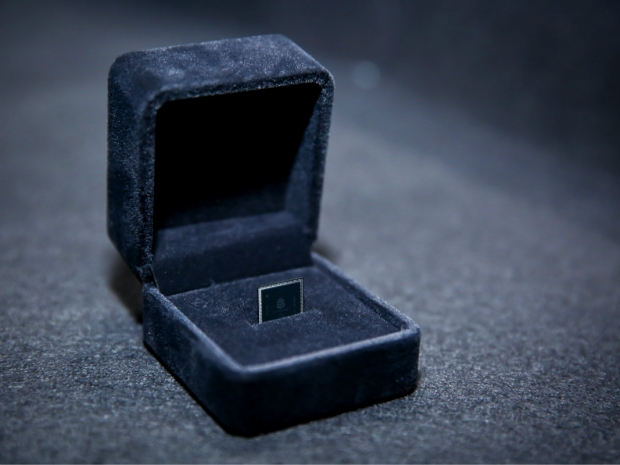It comes as something of a surprise that Xiaomi Pinecone S1 is a big.LITTE processor and that it uses eight Cortex A53s divided in two clusters. Just about everyone in the industry has a chip which has two times four Cort5ex A53s targeting the mainstream market.
The faster cluster has four Cortex A53 cores clocked 2.2 GHz while the slower cluster has four A53 clocked at 1.4GHz. Xiaomi is comparing its chip to the Snapdragon 625, the MediaTek P20 and MediaP10 and, of course, the in-house result looks pretty good. Let me remind you that both Qualcomm and MediaTek have faster representatives in the mainstream market - the Snapdragon 652 / 653 or Helio P25, but Xiaomi conveniently didn’t want to compare its with theirs.
Xiaomi uses a 28nm process while MediaTek and Qualcomm moved to a more advanced 16nm / 14nm in this market segment. The Surge S1 uses Mali-T860 quad-core GPU, 14-bit dual ISP; enhanced image processing capabilities, and supports device displays up to 2560×1600 resolution and 9V2A fast charging.
This is the full list of features:
- Octa-core 64-bit chipset (4xA53 cores 2.2GHz + 4xA53 cores 1.4GHz)
- 28nm high-performance Computing (HPC) process
- Mali-T860 quad-core GPU
- AFBC + ASTC image compression technology
- 32-bit high-performance DSP for voice processing
- 14-bit dual ISP; enhanced image processing capabilities
- Surge ISP algorithm improves camera light sensitivity by 150%
- Dual noise reduction algorithm reduces noise and preserves image detail in low light
- Upgradable baseband; programmable modem, OTA upgradable
- VoLTE high-quality call and video support
- Chip-level security; TEE architecture, strict compliance with safety regulations
- Up to 4K@30fps video playback
- Video capture: 4K@30fps, 1080p@120fps, 720p@240/fps>
- ·Codec support: H.265 /HEVC(Main profile), H.264 (Baseline/Main/High profile), MPEG4 (Simple profile/ASP),
- VC-1(Simple/Main/Advanced profile), and more
- Supports device displays up to 2560×1600 resolution
- Supports 9V2A fast charging
You need to notice the absence of a modem or Wi-Fi on the list, which heavily implies that Xiaomi needs to use an external chip for the LTE / 4G, Wi-Fi and probably even Bluetooth and GPS. The Xiaomi is listing a programmable modem feature, and you can ask Nvidia about that. It had to shut down its Icera programmable LTE modem advanture, as it turned out to be a bad idea.
With this in mind, it looks like Surge S1 is competing more with an entry level solutions from the other manufacturers such as Snapdragon 430 (28nm, 8x A53, Adreno 505), Exynos 7580 (28nm, 4x A53, Mali-T830) and the MediaTek MT6738T (28nm, 8x A53, Mali-T860) or Huawei Kirin 650 (16nm, 8x A53, Mali-T830).
There are a few numbers that Xiaomi shared about the performance. In Aututu it scores 64817, slightly more than Helio P20 and a bit bigger difference to Snapdragon 625. It looks dramatically faster than the Helio P10 that won a lot of hearts of China based manufacturers last year.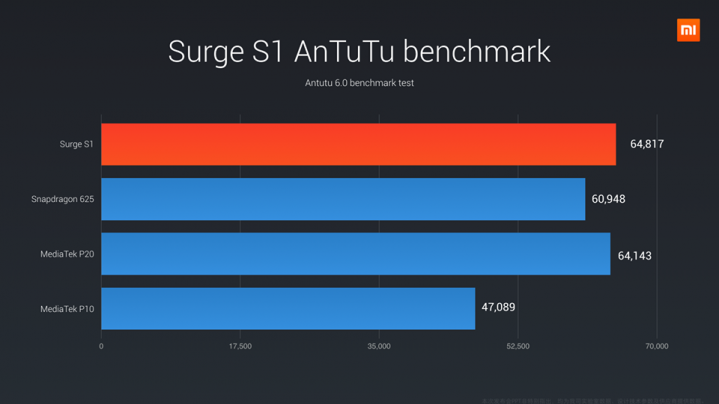
Surge S1 dominates in Manhattan off screen benchmark of GFX Bench showing almost twice as higher score but again in multi core CPU test of Geekbench it loses to Helio P20 dramatically but outperforms Snapdragon 625 and Helio P10.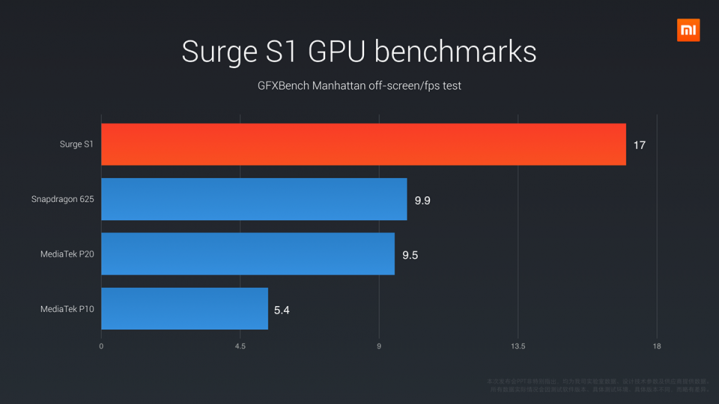
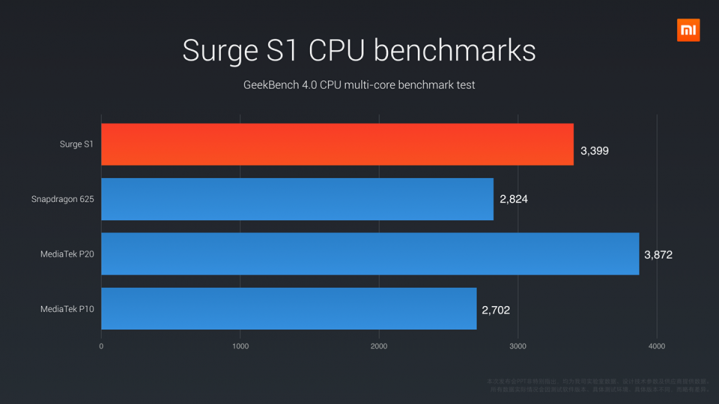
Xiaomi is using Surge S1 that is just launched in China and the 3GB+64GB version retails for RMB 1,499 (204.44 Euro / $ 217.17 US).
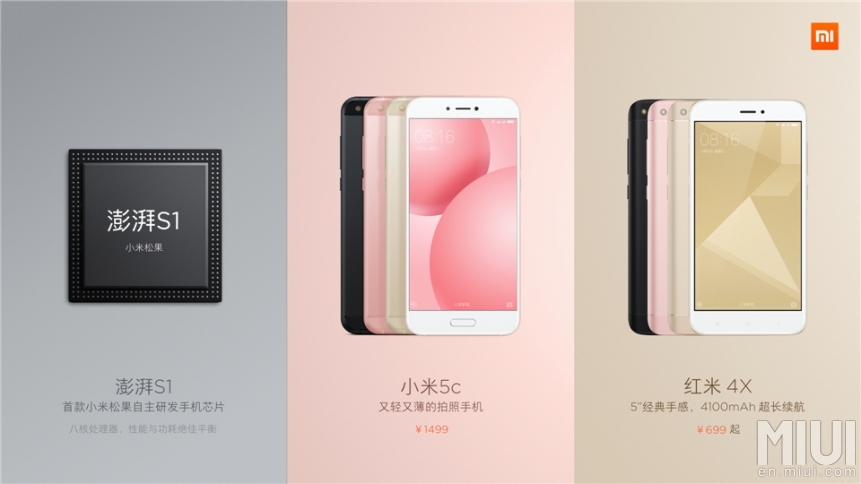
Xiaomi 5c Highlights
- Powered by Surge S1, octa-core 64-bit processor
(2.2GHz quad-core A53 + 1.4GHz quad-core A53)
- 5.15” display, 550-nit brightness,
2048 brightness levels with ultra-precise backlight controls
- Slim and light premium metal body: 132g and 7.09mm thin
- 2860mAh battery; 9V/2A fast charging
- 3GB + 64GB, dual-channel LPDDR3 + eMMC5.0
- 1.25 micron pixel size, ultra-light-sensitive 12MP camera
- Single-frame HDR
- Front fingerprint sensor
- RMB 1,499 (204.44 Euro / $ 217.17 US).
Band supported for now :
- China Mobile 2G/3G/4G, supports VoLTE 16Khz
- China Unicom 2G
- TD–SCDMA 34/39
- TDD–LTE 38/39/40/41
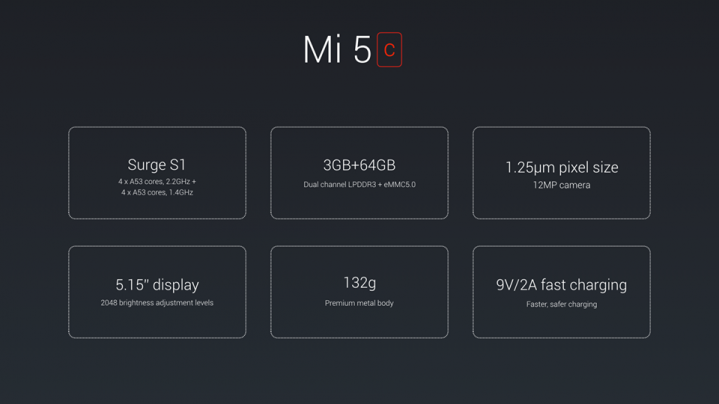
One of the key conclusion that we derive from this launch is that Xiaomi believes it will get a better pricing with its in house SoC. The mains trouble remains is that level of innovation with this chip remains very low. There is absolutely nothing we haven’t seen from the competition and most features of the Surge S1 are a few years old. Remember Qualcomm, MediaTek and soon Samsung have 10nm in the high end and 14nm in mainstream making it a tough sell for Xiaomi. The only benefit of 28nm is that it keeps the SoC cheap, not something that can get you excited even in 200 USD phone.

